#congo king
Text
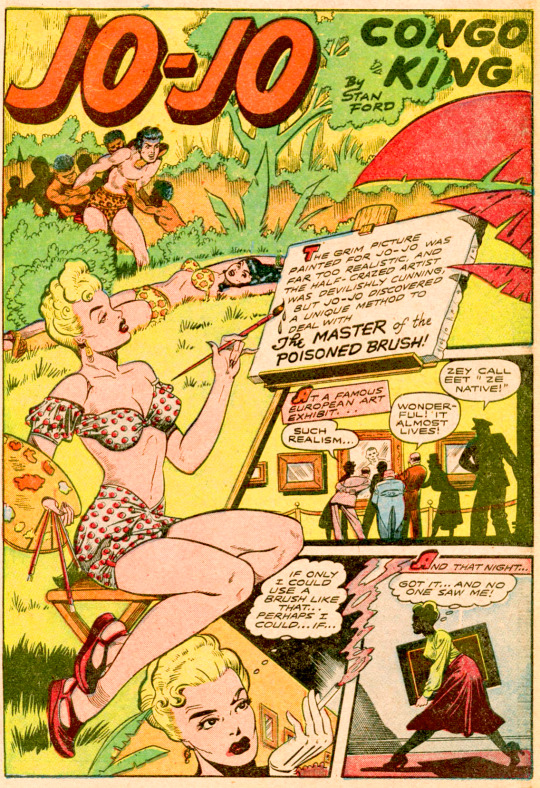
Jo-Jo the Congo King #4 by Stan Ford
76 notes
·
View notes
Text
Congo King
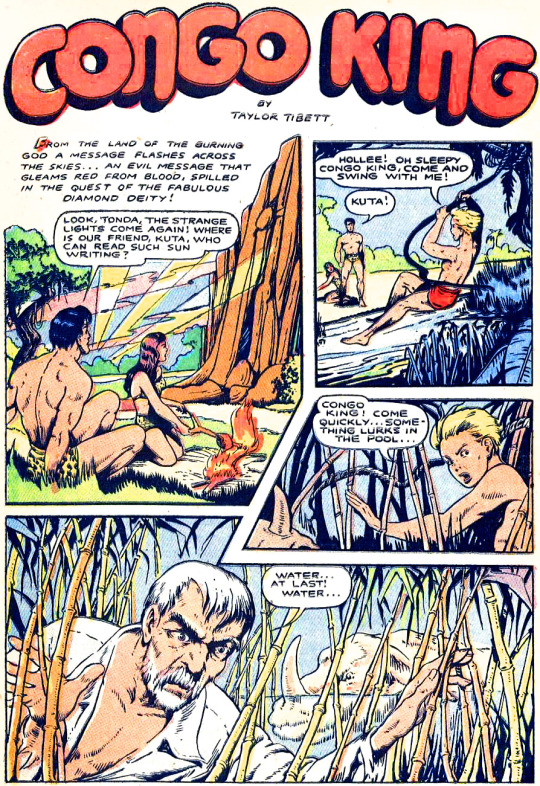
pdsh.fandom.com/wiki/Congo_King_(Green)
Creator(s): Taylor Tibett
Alias(es): Congo King
1st Issue w/Uniform: Atomic Comics #4
Year/Month of Publication: 1946/07

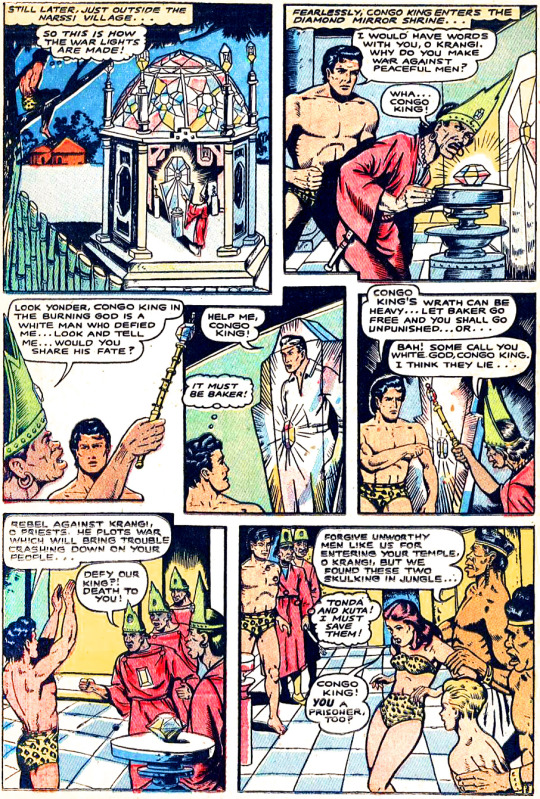
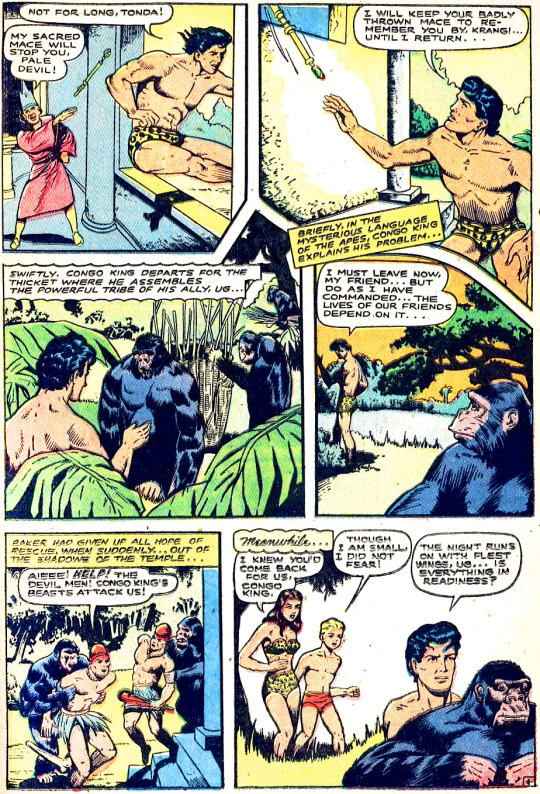

8 notes
·
View notes
Text
#talkin#tik tok#black nationalism#🇨🇩#the democratic republic of the congo#🇧🇪#belgium#antisemitism#xiandivyne#king leopold
178 notes
·
View notes
Text
Hey. It's @reaux07. If you remember my last angry history rant on Paul Robeson, I'm back for Part 2. This time? King Leopold II and his relationship to the Congo. I just finished writing a 5-page, single-spaced essay on this for class, so I'll do my best to summarize in bullet points this time rather than chunky paragraphs. This will still be long though, as a warning, but it's a necessary read. Please let me get through this, because y'all know this hurts to write.
Trigger warnings for... just about everything typically associated with mass colonization (e.g. rape, murder, torture, etc.). Tiktok below as a brief introduction first:
King Leopold II of Belgium, due to his personal unpopularity and lack of love from his parents, had low self-esteem. As his father had already made 50 attempts to colonize foreign lands to no avail, Leopold felt the only way to uplift both himself and his country was to take take control of his own colony.
He checked Sarawak, the New Hebrides, the Fiji Islands, and the Philippines. Nothing. But what was left? The Congo.
How did he learn of the Congo? Leopold hired Henry Morton Stanley, a famous Welsh explorer of the time, to cross Africa from east to west, walking and canoeing 7,000 miles.
Upon the Congo's discovery, Leopold turned his palace into a luxury hotel for the delegates of a new conference to discuss Africa's colonization, supervising every detail. He successfully lied to the major powers of Europe, making claims of charitable and philanthropic aims, and that there would be free trade amongst the African colonies. (And yes, he did give every single attendee a painting of his face... Because he could.)
Meanwhile, back in the Congo, Stanley (the explorer I just mentioned) used bribes and trickery to provide official treaties with the various chiefs of the land in case Leopold ever needed legal proof of land ownership. (Ex of said trickery: One report noted that a village assumed "the white man controlled the sun.")
In 1891 and 1892, Leopold released decrees stating that both vacant land and produce of the forests exclusively belonged to Belgium and that natives could only harvest for the state.
Enforcing Leopold’s rule were 16,000 Africans equipped with modern Belgian-made automatic rifles.
Outing Attempt #1: One African American man, George Washington Williams, during his trip compiled a report to be sent to the American secretary of state. In this letter, Williams remembers bets being taken on who could shoot the native people in the head first, among other instances of vile treatment. While the document never made it back to Williams’ home country, it was eventually found in Europe where he later died.
By this point, the Congo was actually ruining Leopold’s finances and he was growing desperate. But to his surprise, he happened to pick the one spot where rubber grew in abundance, just as the demand for cars and bicycles rose internationally, John Dunlop, a Scottish veteran, having just invented the first pneumatic tire.
Because of this, rubber-prominent areas were the targets of mass exploitation and punishment if daily and weekly rubber quotas were not met.
Missionaries began to write not just to one another, but back home in disgust of these aforementioned “punishments,” one man’s writings put in missionary magazines and national newspapers in Europe. These punishments included rape, tying people up to trees, cutting off men's heads and genitals to be displayed along the fences of Congolese villages, cutting women’s breasts off, and most notably...
Attempt #2: The world, if only momentarily, saw BASKETS after BASKETS of right hands that had been cut off as proof that each of the cartridges given to the Africans had been fired and killed one of their own people. These hands were then smoked for preservation and brought back to their officers.
What did Leopold do once this information came out alongside photos of child mutilation? Acknowledge the abuses and moved on almost immediately.
In Europe, the rubber was processed in a city called Antwerp, ironically named after a mythological giant who also cut off hands. To this day, the connection between such a name and Belgian history has not been made by the general public as countless documents by the Belgian Ministry of Foreign Affairs are kept secret to maintain an image of untouched royalty.
One commissioner in charge of a district in Congo, Leon Fievez, produced one ton of rubber a day, boasting of 1,000 people killed, 162 villages destroyed, burning gardens and plantations so people would starve, and having “only” used 3,000 cartridges. He was nicknamed the “Devil of the Equator” and rightly so.
Attempt #3: One day, a man named Charles Stokes, a British trader working for the Germans, entered the picture. Stokes was arrested for trading in state territory, despite those former claims of free trade, and sentenced to death. Leopold was forced to pay compensation to both Britain and Germany for his death, both countries now increasingly aware of the Congo’s dark reality.
To cover it up, Leopold made claims of the Congo opening up to new companies. Let's be real: His men were on the boards of all these new companies and he took 50% of the profits.
In particular were these "concession companies" where the "hostage system" was set up. Agencies, with official hostage licenses authorizing such, would take the wives of rubber collectors for up to 15 days until the quota was met.
On the 15th day, the men of the Congo either got their wives back or faced further punishment, often death. For the agents, the 15th day meant it was time to calculate commissions, and for the king? It was proof that this new hostage system worked.
These abusive concession companies lasted over 10 years until formal competition arose in South America and Asia.
Attempt #4: Then came Edmund Dene Morel, a half-French, self-taught shipping clerk turned investigative journalist who wrote in The Speaker of the abuses faced by the Congolese, backed up by evidence, not just speculations.
Due to Morel’s growing specialization in West African affairs, he was able to not only send out 15,000 brochures and 3,700 letters in six months after his move to Wales, but start his own newspaper, West African Mail.
By 1903, Roger Casement, an ally to Morel’s cause, spent two months traveling the upper Congo, recording African testimonies. He, too, realized that missionaries were key witnesses and went to visit Joseph Clark (a missionary of 20 years) for 17 days.
Through these reports, which grew to 50 pages in length, Casement and Morel were able to solidify Belgium as perpetuating the worst colonial system Africa had ever known. Punishments included Africans performing public incest for the colonists' entertainment, decapitation, women being stabbed with wooden spikes up their vaginas, and one woman tied up to a tree and slashed straight in half from her left shoulder through her abdomen and out the other side.
The West African Mail even reported on a part of Congo no one knew existed, private property within private property called the “Crown Domain” on the other side of Lake Tumba, which gained 231 million euros alone, all sent directly to King Leopold II. Crown Domain was 10x 5)3 size of Belgium.
Founded by Morel, Liverpool became the headquarters of a coalition called the Congo Reform Association. He also published a book called Red Rubber (1906). I think you’ll find the cover particularly striking! Check out the hand in the bottom right corner being weighed against King Leopold II on the left.

Leopold obviously not having this, commissioned a number of books and monthly magazines to clear up the mess. This didn't work. Obviously.
He even tried to send his own international commission to control what the Congolese said in 1904, to no avail. This was due to a missionary named John Harris who had taken the accounts of various people in the area and sent them back to Morel.
In one particularly heartbreaking moment, a chief brought to Leopold’s judges 110 twigs for each of the entire villages, not just people, killed by the Belgian state, naming every last one.
By the time they returned to Europe, the governor-general committed suicide and, upon being asked, Harris suggested Leopold should be sent to the gallows by the relatively new International Court of Justice.
The commission's report vindicated Casement and Morel. Leopold had tricked no one. EVERYONE in Belgium was calling him out.
Leopold ordered all of the Congo State Records to be burned.
In 1908, the Congo became a Belgian colony, not longer Leopold’s personal property. The state still made claims of "civilizing" the Africans after Leopold's death though, utilizing the leftover mineral exploitation industry with no guilt.
At least during his funeral, which he was denied of having privately, the entire city booed his body <3 well deserved. By this point, he had become Europe’s most hated man of the time.
And in case you were wondering, Casement and Morel were both accused to pro-German sympathies during WWI and executed.
I would like to add more detail but I think I’ve hit a character limit. Just know that Congo’s population was cut in HALF, in some places as much as 60-90%. Villages after villages were burned, as shown through so many soldiers’ and missionaries’ journals. This was a genocide of over 10 MILLION PEOPLE y’all. Hearing this story was truly SICKENING, but here’s the BBC 4 documentary we watched for class for more: Congo: White King, Red Rubber, and Black Death.
What truly gets me is just how OTHER colonizers were calling this man out after finding out the full truth… For me, that feels like extra proof of how truly messed up this was if THEY were disturbed too.
And what feels truly insidious was how Leopold made sure to institutionalize all of his wrongdoings and was so… obviously knowing about every wrongdoing, I mean writing in letters to make sure no one else found out. Please…
Linking my angry history rant on Paul Robeson from last semester here.
Happy Black History Month.
#belgium#king leopold ii#democratic republic of congo#history#black history month#colonialism#tw genocide#tw rape#tw torture#tw massacre#the congo#tw incest#resources#bipoc#undescribed#reaux speaks#black lives matter
197 notes
·
View notes
Text
Why, then, did the killings go on for so long? The same irrationality lies at the heart of many other mass murders. In the Soviet Union, for example, shooting or jailing political opponents at first helped the Communist Party and then Josef Stalin gain absolute power. But after there were no visible opponents left, seven million more people were executed, and many millions more died in the far-flung camps of the gulag. So many engineers were seized that factories came to a halt; so many railway men died that some trains did not run; so many colonels and generals were shot that the almost leaderless Red Army was nearly crushed by the German invasion of 1941.
In the Congo, as in Russia, mass murder had a momentum of its own. Power is tempting, and in a sense no power is greater than the ability to take someone's life. Once under way, mass killing is hard to stop; it becomes a kind of sport, like hunting. Congo annals abound in cases like that of René de Permentier, an officer in the Equator district in the late 1890s. The Africans nicknamed him Bajunu (for bas genoux, on your knees), because he always made people kneel before him. He had all the bushes and trees cut down around his house at Bokatola so that from his porch he could use passersby for target practice. If he found a leaf in a courtyard that women prisoners had swept, he ordered a dozen of them beheaded. If he found a path in the forest not well-maintained, he ordered a child killed in the nearest village.
Two Force Publique officers, Clément Brasseur and Léon Cerckel, once ordered a man hung from a palm tree by his feet while a fire was lit beneath him and he was cooked to death. Two missionaries found one post where prisoners were killed by having resin poured over their heads, then set on fire. The list is much longer.
Michael Herr, the most brilliant reporter of the Vietnam War, captures the same frenzy in the voice of one American soldier he met: "We'd rip out the hedges and burn the hooches and blow all the wells and kill every chicken, pig and cow in the whole fucking ville. I mean, if we can't shoot these people, what the fuck are we doing here?" When another American, Francis Ford Coppola, tried to put the blood lust of that war on film, where did he turn for the plot of his Apocalypse Now? To Joseph Conrad, who had seen it all, a century earlier, in the Congo.
—King Leopold’s Ghost: A Story of Greed, Terror, & Heroism in Colonial Africa
Reading this due to current events (Congo, Palestine, Ukraine, Myanmar, Azerbaijan, Xinjiang, Tigray, Manipur… nothing ever changes, does it)
#can’t tag it as genocide when it wasn’t meant as one#but worth mentioning#for blacklist sensitivity#since mass terror and mass torture aren’t exactly common tags#history#congo#belgium#russia#vietnam#america#king leopold's ghost#imperialism#communism#colonialism#capitalism#all the big -isms#torture tw#murder tw#child death tw
23 notes
·
View notes
Text
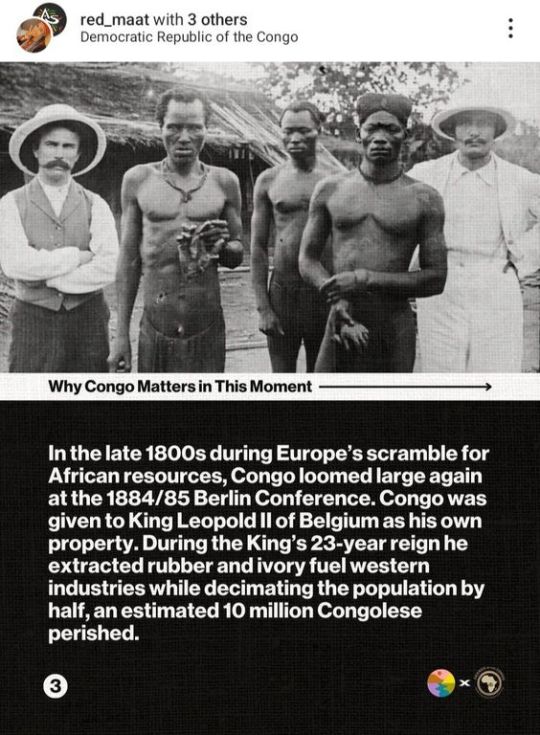
7 notes
·
View notes
Text
"Boycott Fatigue" is some made-up bullshit
Y'all: Ugh, I'm so worn out from all this boycotting!
Boycotting:

#how the hell y'all get “shut up and don't spend money” fatigue?#free palestine#free gaza#from the river to the sea palestine will be free#free congo#free haiti#free hawaii#free sudan#boycott israel#fuck israel#boycott disney#boycott mcdonalds#boycott starbucks#boycott burger king
13 notes
·
View notes
Text

A gorgeous page by Frank Frazetta from Thun'da, King of the Congo #1 (January, 1952). Thun'da was a strong influence on Mike Grell's The Warlord series for DC, which appeared more than twenty years later.
Frazetta only drew the first issue of this comic book, which was written by Gardner Fox. The remaining five issues were drawn by Bob Powell who, while a good artist in his own right, is no Frazetta.
Then again, who is?
Despite being short lived, the comic was the source for the 1952 movie serial King of the Congo.
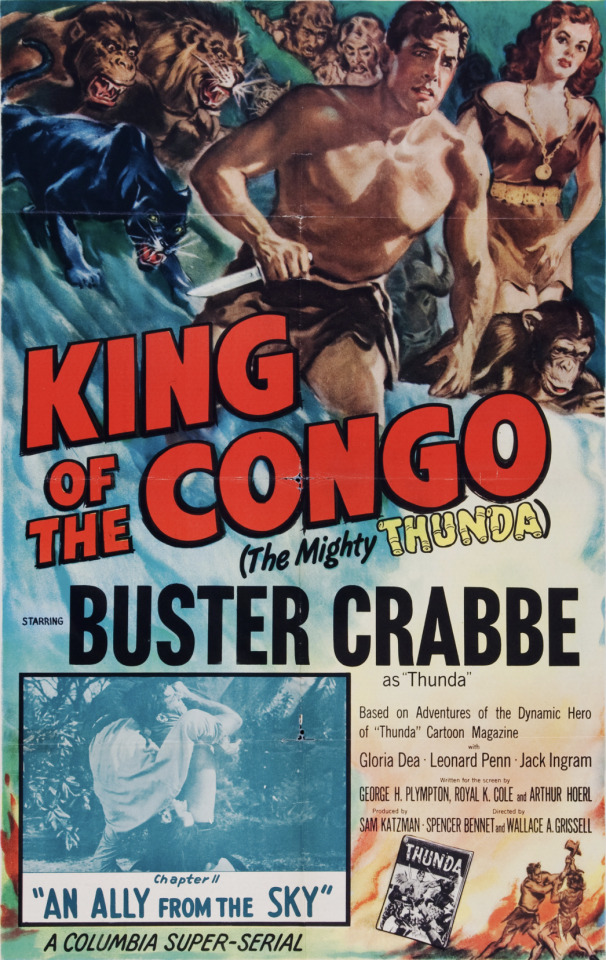
Leading man Buster Crabbe was most famous for his roles as Flash Gordon and Buck Rogers, but he had prior loincloth experience in serials playing Tarzan and Kappa the Lion Man. This would be Crabbe's last role in a serial, as well as the last time a Tarzan-like jungle hero appeared in the serials as well.
#Thun'da#Thun'da King of the Congo#King of the Congo#Frank Frazetta#Gardner Fox#Golden Age comics#Buster Crabbe#film serials
27 notes
·
View notes
Text
i will not get pedantic in the notes i will not get pedantic in the notes i will not get pedantic in the notes i will not
#belgium and more specifically king leopold ii are primarily responsible for the millions of deaths in the congo#i don't want to let france off the hook but their worst colonial atrocities were in north africa southeast asia and the south pacific#they absolutely committed atrocities in the congo but relative to belgium it was a drop in the bucket#overall the points are good and accurate but i get so stressed by videos like this where it's mostly accurate with a few mistakes#because those mistakes sound legitimate and accurate based on the rest of the video#so people don't fact check and take the whole thing to be true#anyway i'm very nervous around any history that does not explicitly and readily cite its sources#and that's a me issue#tbc i'm not like upset with or judging anyone for rbing i'm just talking to myself#instead of going 'well actually' in some rando's notes when all they did was share the vid
19 notes
·
View notes
Text
#OTD in 1903 – Roger Casement completes report about abuses in Belgian Congo.
‘Failure to meet the rubber collection quotas was punishable by death. Meanwhile, the Force Publique were required to provide the hand of their victims as proof when they had shot and killed someone, as it was believed that they would otherwise use the munitions (imported from Europe at considerable cost) for hunting. As a consequence, the rubber quotas were in part paid off in chopped-off…

View On WordPress
#anti-Congo campaigns#Belgian Congo#Belgium#Britain#Casement Report#Commission of Inquiry#Congo Free State#Ireland#King Léopold II#Roger Casement
11 notes
·
View notes
Text

Jo-Jo the Congo King #10 from 1948
29 notes
·
View notes
Photo
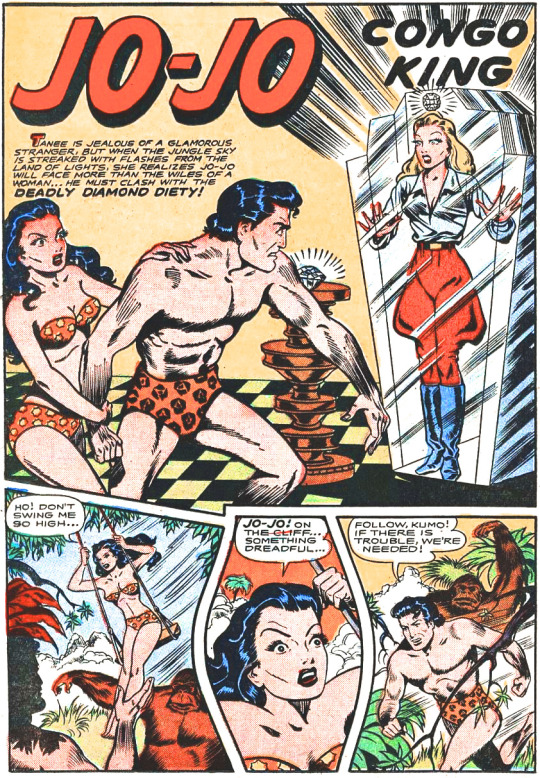
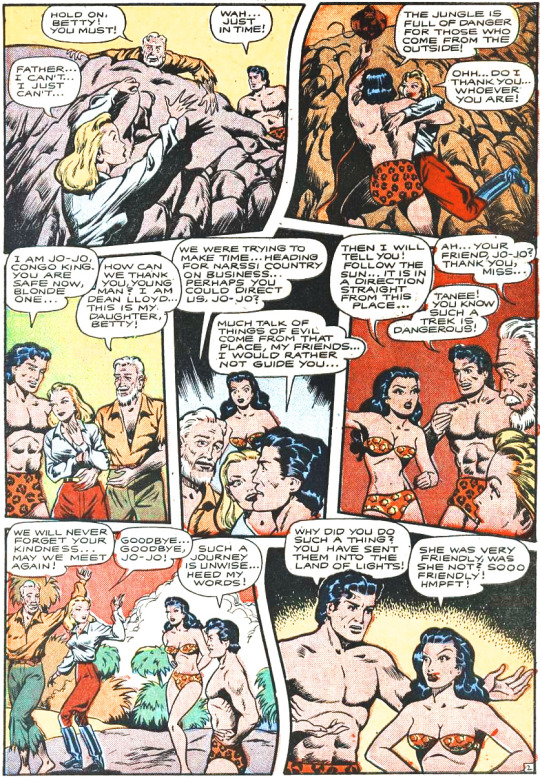


Jo-Jo, Congo King
Creator(s): Unknown
Alias(es): Jo-Jo
1st Issue w/Uniform: All Top Comics #8
Year/Month of Publication: 1947/11
pdsh.fandom.com/wiki/Congo_King_(Fox)
#superheroes#comics#jo-jo#congo king#classic#golden age#brown with black spot trunks#brown with black spot underwear
6 notes
·
View notes
Text
alternative shop if available in area Co+op
Thrive-Market
Starbucks/Coffe Mat/Costa Coffee/Dolce Gusto/Expresso House/nespresso Alternative : Local or Caffè Nero: USA
Heinz Tomato Ketchup alter:Primal Kitchen
Huda Beauty Makeup, Skincare, & Fragrance
https://hudabeauty.com/us/en_US/home
https://hudabeauty.com/uk/
https://hudabeauty.com/dt/en_IE/home
misc : https://alchemiya.com/
morrisons.com (Only in the UK)
halalbooking . com
boycott chanel
alternative : Lush cosmetics
sunnamusk
huda beauty
mainstream soda drinks like coca cola :Barr Soft Drinks located on the uk areas https://www.agbarr.co.uk/contact-us/our-locations/
https://apps.apple.com/app/id6472617524
Boycott app
alternative to intel or nvidia or Siemens for pc build is AMD
Boycott Sabra
#free Palestine#boycott Israel#boycott divest sanction#bds movement#permanent ceasefire#free Congo#free Hawaii#free Yemen#free Haiti#free Sudan#free Armenia#free Myanmar#boycott dell#boycott Ben & Jerry's#boycott Bounty#boycott McDonald#boycott burger king#boycott divest sanction the Capital One#boycott Chanel#boycott Charmin#boycott Cheetos#boycott Fairlife#boycott Intel#boycott NVIDIA#boycott Nestle#boycott Aero#Boycott Kayak brand#Boycott Kinder#Boycott KitKat and Mars.co and make your copycat candies#Boycott Krispy Kreme
6 notes
·
View notes
Text
#talkin#tik tok#king leopold#belgium#king leopold ii#racism#colonialism#colonization#congo#democratic republic of the congo
465 notes
·
View notes
Text
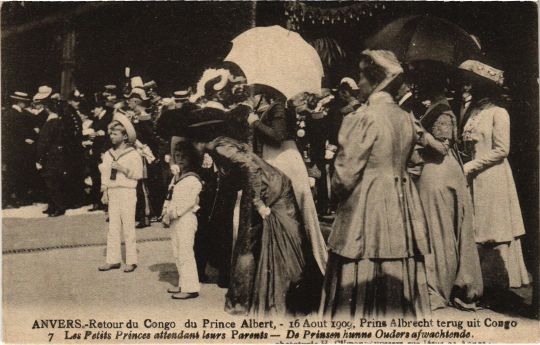
Prince Albert, later King Albert I of Belgium returning from Congo in 1909
Belgian vintage postcard
#vintage#tarjeta#congo#briefkaart#1909#postcard#photography#postal#prince albert#carte postale#sepia#ephemera#historic#later#king#ansichtskarte#prince#belgium#belgian#postkarte#albert#returning#postkaart#photo
3 notes
·
View notes
Text

How Portuguese Slave Traders Changed Ethiopia and Congo
Portuguese trading of enslaved Africans affected two major African powers in very different ways.
Between the sixteenth and nineteenth centuries, the slave trade transformed African nations in profound and devastating ways. As historian Fikru Gebrekidan writes, we can see some of the diversity in how this played out by looking at the relationships among three Christian kingdoms: Congo, Ethiopia, and Portugal.
Gebrekidan notes that when Portugal established contact with Congo and Ethiopia around the turn of the sixteenth century, the three kingdoms had much in common, including similar levels of material development, systems of divine kingship, and belief in magic. Both African kingdoms exchanged ambassadors and trade goods with Portugal and sent students and interpreters to Europe.
Enslavement was a common institution around the world at this time, but enslaved people in Africa generally didn’t make up a permanent underclass. They might be war captives, debtors, or those banished from their home society for a serious crime. In Ethiopia, they could gain freedom in various ways, including becoming a priest or a soldier with their masters’ permission. In parts of Congo, they weren’t expected to do more work than free people, could hold office, and might marry into the host society.
But, as Portugal established increasingly strong positions in Africa, the slave trade intensified and changed in its character. Portuguese traders paid no mind to traditional guidelines that allowed enslavement only of people from a social or religious outgroup, kidnapping Africans indiscriminately and sending them to horrific fates in distant lands.

Gebrekidan writes that the increasingly aggressive slave trading affected Congo and Ethiopia very differently. Congo was located in an area often traversed by Europeans, and it was relatively easy for the Portuguese to get military backup from its colonies of Angola and Sao Tome, or even by sea from Portugal. This left the Congolese vulnerable to human trafficking. As early as 1526, Congo’s King Afonso I wrote to King João III of Portugal complaining that slave trading had devastated his kingdom and calling for the Portuguese to cease the practice. But the transatlantic slave trade only intensified.
This transformed slavery within Congo, too. People committing minor offenses might be enslaved within their own society, or they might be sold away to foreigners. The status of slaves became so degraded that leaders sometimes killed captives simply as a demonstration of their wealth and power.
In contrast, Ethiopia’s geography made it less vulnerable to Portuguese forces. This made it possible for Emperor Facilidas to successfully expel the Europeans from the country in 1632. While enslavers wreaked havoc in the East African territories around Ethiopia well into the nineteenth century, the kingdom itself remained relatively stable. And, although it did not participate in the slave trade itself, it profited by taxing enslavers along its outskirts.
The upshot, Gebrekida writes, was that, by the time the scramble for Africa began in the nineteenth century, Congo was destabilized, depopulated, and unable to mount a strong resistance. Ethiopia, on the other hand, successfully staved off colonizers, becoming a symbol of African self-determination.
#african#afrakan#kemetic dreams#brownskin#africans#afrakans#brown skin#ethiopia#portugal#portuguese#congo#gebrekidan#slave trade#afonso#king joao
11 notes
·
View notes